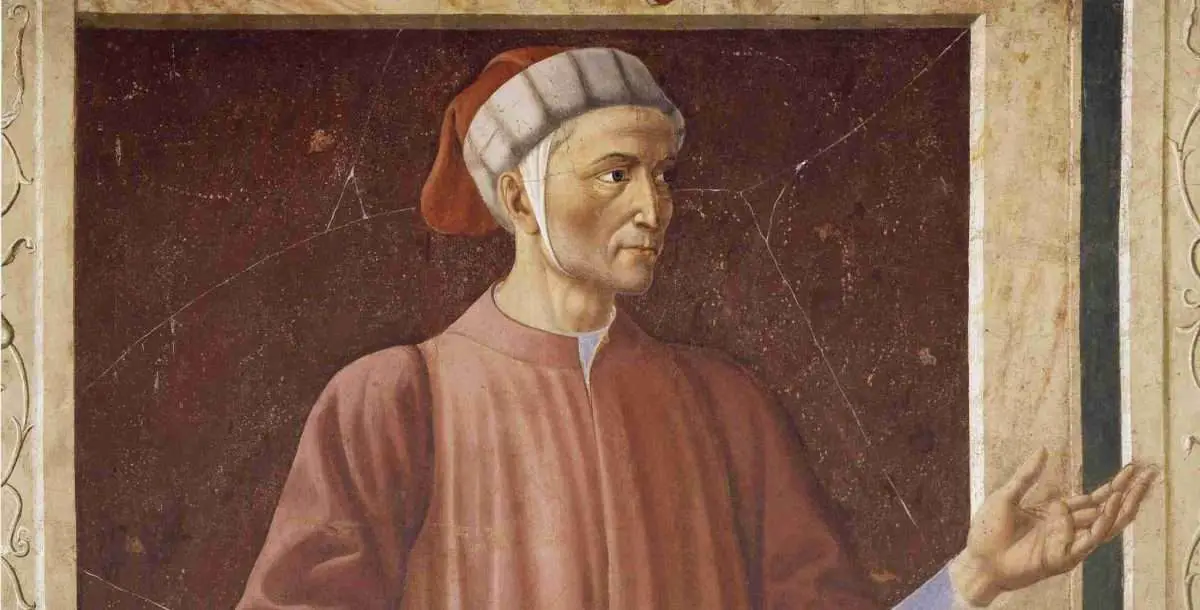In 2021, Italy will commemorate the 700th anniversary of the passing of Dante Alighieri, known worldwide as the father of the Italian language.
The year, known as Anno Dantesco, will celebrate the life and works of Dante in events throughout Italy, particularly in Florence and Tuscany, where the poet was born in 1265. Ravenna, the city where Dante died in exile and was buried in 1321, will also hold special events to celebrate the man known as il Sommo Poeta — the Supreme Poet.
Dante Mania began in 2015, the 750th anniversary of Dante’s birth. In 2020, the Italian government declared March 25 as Dantedì, National Dante Day.
The events in 2021 will mark the end of a seven-year celebration.
“Dante. The Vision of Art” – Major Art Show Dedicated to Dante


As part of Anno Dantesco celebrations, the Uffizi Gallery is organizing several exhibitions containing images of and/or associated with the poet. The largest of these will be held at the Musei San Domenico in Forlì, a “Città Dantesca” in Emilia-Romagna.
“The choice of Forlì is part of an overall strategy for enhancing a territory that is a natural bridge between Tuscany and Emilia-Romagna and is also a “Dantesque” city,” exhibition organizers explain. “In Forlì, Dante was a refugee in autumn 1302, remaining for over a year with the Ordelaffi, Ghibelline lords of the city.”
Among the art to be included in the show are pieces from the Uffizi collection, including Andrea del Castagno’s portrait of the poet, which is usually not on display in the Florence museum. You can view other “Echoes of Dante” in the Uffizi’s virtual gallery.
“Dante. The Vision of Art” will run from 12 March to 4 July 2021 at the Musei San Domenico in Forlì.
Anno Dantesco Celebrations in Florence and Tuscany

There will be more than 100 Dante events in Florence in Tuscany in 2021, including exhibitions, readings, conferences, and performances. Here are some of the highlights.
- Construction on the National Museum of the Italian Language will begin in 2021 as a way to concretely honor the contributions of Dante. One of the major partners for this museum is the Accademia della Crusca, the oldest linguistics academy in the world. The academy, founded in Florence in 1583, will organize an exhibition on Dante in the cloisters of Santa Maria Novella during the Anno Dantesco. Additionally, the Crusca website will host a “word of the day” related to Dante. See vocabolariodantesco.it for details.
- The Uffizi will present two Dantesque works by artist Giuseppe Penone. One will be a 15-meter monograph of verses inspired by Dante’s Paradiso. The other, a sculpture known as “Identità,” will be placed in Piazza della Signoria. The sculpture features two intertwined trees — one with roots in the earth, the other with roots turned towards the sky — modern art inspired by Dante’s trees.
- The Bargello, which houses the oldest portrait of Dante, will host two Dante exhibitions in 2021. “Honorable and Ancient Citizen of Florence” will be “dedicated to the reconstruction of the relationship between Dante and Florence in the decades immediately following his death, presenting its actors, initiatives, places, and themes.” It will run from March through July. The second exhibition, “The Admirable Vision – Dante and the Comedy in the Symbolist Imagination” runs from September 2021 through January 2022 and will focus on Dante’s in the popular imagination in the second half of the 19th century following Florence’s 600th anniversary retrospective on the poet.

- Museo Galileo will organize an exhibition linking Dante with science called “From Hell to the Empire — Dante’s World from Science to Poetry.” In 1588, per Atlas Obscura, “Galileo gave two lectures in which he investigated the dimensions of Hell” as imagined in Dante’s Inferno.
- The Casa di Dante has made a virtual tour of its collection. The museum is built on the site where Dante’s childhood home stood during medieval times.
- The Opera di Santa Croce — in other words, the museum attached to the church of Santa Croce — will host a multimedia exhibit on Dante titled “Dante Poeta Eterna.” Santa Croce is important to a Dante itinerary because of its statue of Dante, installed in the piazza in 1865, and an empty but elaborate funerary monument dedicated to Dante.
Anno Dantesco Events in Ravenna

Dante Alighieri lived in exile for the last 19 years of his life. It was during this time of exile that Dante wrote La Commedia, known reverently as La Divina Commedia or The Divine Comedy.
In 1318, Dante settled in Ravenna at the invitation of its ruler Prince Guido Novello da Polenta. Three years later, in September 1321, Dante died in Ravenna, where he was given a funeral befitting his exalted status. He was buried, according to contemporary historian Giovanni Villani, “with great honor, in the attire of a poet and of a great philosopher.”
While Dante’s burial in Ravenna has long been controversial — at least to Florentines — the Supreme Poet has an austere and very official tomb in the ancient city. Dante’s Tomb will be the centerpiece of Ravenna’s Dante celebrations.
But the city will also host other events during the Anno Dantesco, including an art exhibit for the occasion. “Dante in the Art of the Nineteenth Century,” will be organized in conjunction with the Uffizi and will run through September 2021.
At the end of the year, Ravenna will again install La Luce delle Parole, neon lights featuring Dante’s famous verses in cursive above six streets in the city center.
Anno Dantesco Resources
- Dante 2021 and Dante Mania are official national websites
- “Echoes of Dante” – online gallery of Dante-related art from the Uffizi
- Accademia della Crusca
- Viva Dante, Anno Dantesco info for Ravenna
- Dante Alighieri: A Chronology
- Dante’s Walk: Il Cammino di Dante
- How to Read the Divine Comedy If You Don’t Speak Italian
Post first published on December 30, 2020



Leave a comment